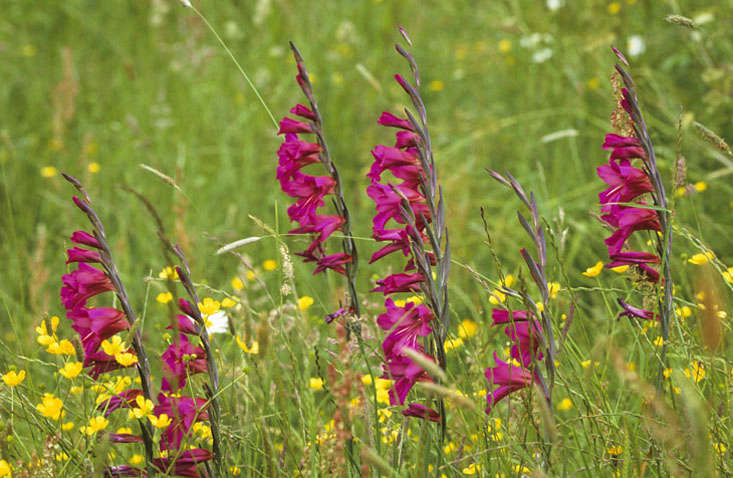A meadow, with its buttercups and daisies, doesn’t belong next to the house, does it? People expect something green and smooth, well-watered yet free of moss. When conditions such as drought work against us, we still persist, as though a perfect lawn is a basic human right.
For garden visitors, expectations are heightened, especially in a place like the British Isles where lawns were made famous and where drought is still relative. Perhaps this is why some visitors to Great Dixter in East Sussex have been so aghast at the sight of a meadow almost touching the front door that they’ve asked for a refund.
Meadows at Great Dixter and Beyond was originally published in 2004, written by Christopher Lloyd as a response to growing interest in the meadows around his home. Since his death, the idea of meadow gardening has grown in relevance, with drought becoming entrenched in areas of the world which had until recently been blanketed in green grass. A new look at Meadows, in an updated edition published today, is as timely as ever.
Photography by Jonathan Buckley, except where noted.

The meadows came with the house: around 1912 they were established at the front and back by Daisy Lloyd, while her husband Nathaniel focussed on yew hedges and topiary. Their son Christopher extended the areas of rough grass, later including his father’s putting lawn, where the lifeless sward was allowed to run wild in summer.

Now left alone during the growing season but smartened up in early autumn when the yew shapes are trimmed, the poor soil in the Topiary Lawn was already ideal for establishing a good balance of grass and wildflowers. The introduction of semi-parasitic yellow rattle, which weakens the vigor of grasses, meant that more rarefied plants, like common spotted orchid, also made their homes there.

“It was a great relief,” writes Christopher Lloyd, “when we allowed our topiary lawn to become meadow, to be able to contemplate dandelions with pleasure instead of resentment.”

“The simplest way to create a meadow is in an existing lawn,” writes Lloyd. Matching plants to the conditions a garden has to offer is the most important factor. In this comprehensive book, every type of meadow is discussed, from bulbs to the “cornfield scene.”

The aesthetic and conservational aspects of a looser environment are well-documented here, while Lloyd concedes that not everybody is signed up for this: “You may need to convince your neighbors in advance of turning a lawn into flower-studded grass.”
















Have a Question or Comment About This Post?
Join the conversation (1)